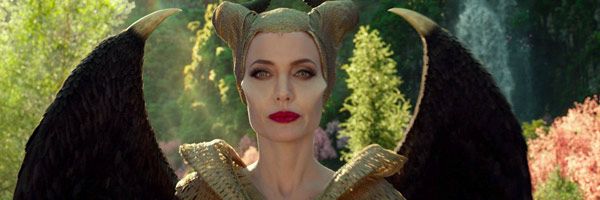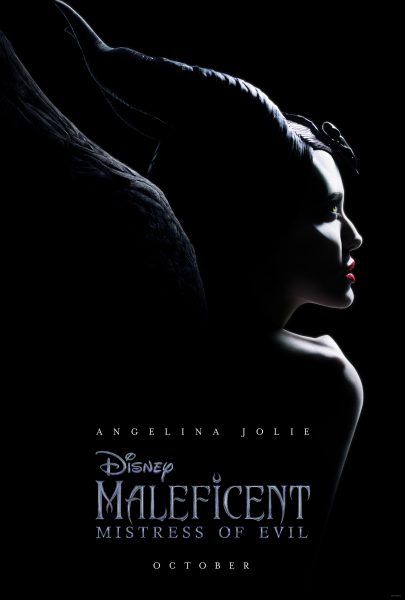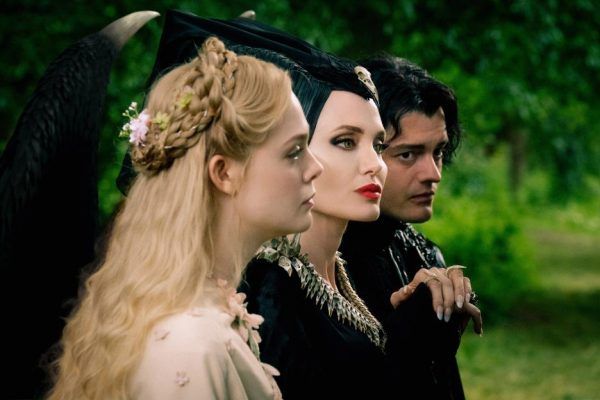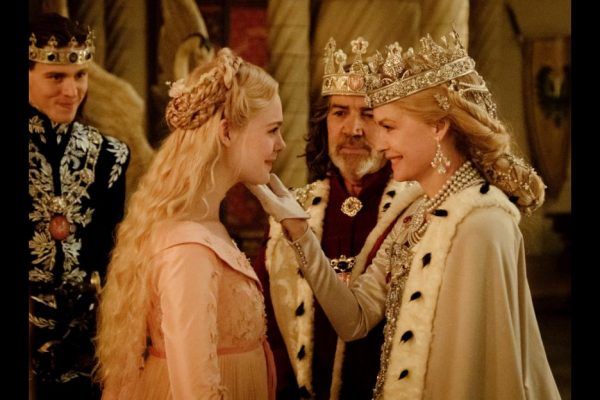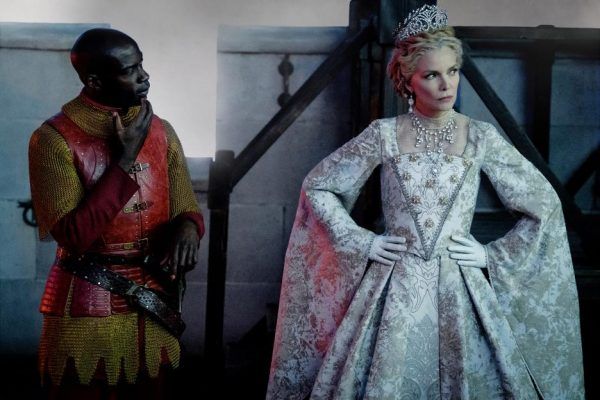From director Joachim Rønning, the fantasy epic Maleficent: Mistress of Evil delves deeper into the bond between the dark fae Maleficent (Angelina Jolie) and her human goddaughter Aurora (Elle Fanning), as the complex family ties that bind them are tested. And while the impending nuptials between Aurora and Prince Philip (Harris Dickinson) are a cause for celebration and a uniting of two worlds, they also lead to new enemies and unexpected allies.
During this 1-on-1 phone interview with Collider, screenwriter Linda Woolverton talked about her longtime career with Disney, breathing new life into Disney heroines for a modern age, the challenges of developing Maleficent’s backstory for the first film, how the story for the sequel evolved, working directly with Angelina Jolie, giving Maleficent a worthy adversary, the supporting characters she enjoyed writing for, the colors she likes to paint her female characters with, whether she’d want to write a Marvel or Star Wars movie for Disney, and the types of characters she’d still like to write for.
Collider: This is one of those movies that, when you think about big Hollywood movies, this is the sort of thing that you think about, with the lavish costumes and sets, and all of the fantasy of it.
LINDA WOOLVERTON: It is that. It delivers on those areas.
You’ve taken on Belle from Beauty and the Beast, you’ve taken on Alice from Alice in Wonderland, and Aurora from Sleeping Beauty for Maleficent now. What does it mean to you to be able to have a hand in reinventing and breathing new life into these Disney heroines for a modern age?
WOOLVERTON: Well, it started with Belle from Beauty and the Beast, and that was a long time ago, but I’ve always been a feminist. When they approached me about that, I looked at it and thought, “Nobody’s gonna buy this anymore.” And that was 25 years ago. I said, “The modern audience isn’t gonna buy this. These feminist moms aren’t gonna buy this.” So, basically it was me being subversive, just to get a different slant on the character, who wasn’t just the beauty, and all about that. So, we made a parody of somebody who sees her as just that, and that’s so not what she is.
I love how different the women feel in Disney films now, and that is something that’s evolved with the time.
WOOLVERTON: You can’t really blame the old movies because they are products of their time. They presented what was considered the best female model, which was beautiful and sweet and kind and enduring, and saving little animals, and waiting for somebody to come rescue her. That was what the male generation saw, as what women’s place was.
You’ve had quite a long career, writing projects for Disney. What does it also mean to you, to be a part of the Disney family, and to make an impact on how we perceive these characters now?
WOOLVERTON: It was really important to me. I honestly didn’t even know it, at the time, but now when I look back at it, every single female protagonists that I approach, be it a princess or Alice, or whatever it was, it was always in an effort to nudge the culture forward and to nudge the perception of what a woman is forward. Luckily, I was able to convince the Disney folks and, luckily, I had the power of an incredible organization, who has worldwide reach, to push that agenda. So, when I look back on it, I can say, “That’s what I was doing, all along,” but I didn’t really know that.
When you created the backstory for Maleficent and you wrote the first film, did you think, even then, that there was a chance you’d be able to return to this character and explore her and her world further for a sequel, or were you surprised when Disney actually came back to you for another film?
WOOLVERTON: Well, we were just trying to get that one accomplished and successful. We had no idea how it would be accepted because with the change-up, making Maleficent the protagonist, it was just insane. When they came to me with that, I said, “That can’t be done. She kills a baby. Can’t happen! Cannot!” And then, I went away and thought about it, and I came up with a way to make us understand where she was, at that point in time. We changed it from dying to just sleeping forever because dying was just too much.
Was there a moment when you realized they were serious about wanting a sequel?
WOOLVERTON: It took awhile to decide to do the sequel, and then it took awhile to find what that would be. We went down three paths that didn’t play out, so it took awhile to get this. It took a bit.
What was it that finally led you here? Did it help knowing what the story wasn’t to find what the story would be?
WOOLVERTON: That’s interesting. For me, I thought, “Okay, what happened? To me, the most significant thing about the movie is the relationship with Maleficent and Aurora, and how that changes as Aurora matures and becomes her own person. It’s really about motherhood, and mothers and daughters, and even the slant of the adopted child, which was very much Angelina Jolie’s feelings about it. That, to me, was the most significant thing, and that was always played up, through all of the various versions that we did. But it was also the concept of her discovering herself and where she came from because she was always different than everybody else. She was so big. Why was she so big? It was also about the discovery of others like her, and that theme of the destruction of nature.
I really appreciated that the prince also gets his own story, and is more than just the prince who rides in to save the princess.
WOOLVERTON: Yeah. It was too bad we didn’t get the original guy (Brenton Thwaites), but this current fellow (Harris Dickinson) is fantastic. I actually talked to my daughter about modern relationships with young people, especially strong women, and how that has changed, and how we could depict that, in a really positive way. I feel really happy about the fact that you really, really feel that they love each other.
There are so many fun side characters in this. Were there any of the supporting characters that you found most fun or entertaining to write for?
WOOLVERTON: They were all fun. My favorite character of all, who really didn’t get that much to do in this one is Diaval. I love him. He’s the one who says no to power. He’s her conscience. She torments him. And I love the actor. Sam Riley is really great. But all of the little supporting characters are really fun, too. We got more personality for the different fairies this time. We actually got to make personalities for them, which was wonderful.
Did any scenes or characters get cut from the film, that you were bummed not to get to see in the finished product?
WOOLVERTON: No. Nobody got cut. Everybody hung in there. They were all in. Everybody had their moment in the sun.
Did already knowing who Maleficent is make it easier to write for her, this time around?
WOOLVERTON: Yes. It took a long time to find her, in the first movie. I would write a version and Angie would say, “We lost her.” And then, I would go back and rewrite it again. So, finding that balance for Maleficent was hard because she isn’t mushy and she’s not prone to sentiment. So, to find that character and see within her, her deep feelings and her caring for her daughter, was a fine balance. But then, we knew that and we had that, so we could move forward. And then, the new thing, with this one, was to make her vulnerable. How do you make that strong character vulnerable, when she enters into her new world?
What’s it been like to have someone like Angelina Jolie to work directly with, throughout the process of all of this?
WOOLVERTON: She was so much a part of creating it, and we worked very closely together creating this version of Maleficent, as opposed to the original animated movie. So, my relationship with her was really founded in that. We discovered the character together. And the thing about Angie is that she’s a writer, as well. She’s a really multi-talented individual. She isn’t just all about being an actress. She really brings so much to the table. If it would have just been me, the character would have been softer because I’m a little softer than Angelina. So, finding that middle ground was the key.
Since you were taking the antagonist of the story and making them the protagonist, was it challenging to then find an adversary for her that was someone she could actually fear a bit?
WOOLVERTON: Yeah. That was one of the bumps, along the way. She has to have a worthy opponent because she’s so powerful. The question was always, “Well, why doesn’t she just turn everybody into frogs and be done with it?” As with the first movie, we had to limit her power somehow. In the first movie, we had the iron. In this one, we wounded her, which limited her powers, and then found a way to destroy her and her kind, with Ingrith. And then, the casting was also important, with these two very powerful, equal stars. Ingrith had to be bad enough to make her a worthy opponent to Maleficent. Plus, there was the emotional connection of the threat to Maleficent, of taking her daughter away.
A lot of writers include pieces of themselves in their characters. Do you feel like there are aspects of you in Maleficent?
WOOLVERTON: Yes, I do. I don’t think you can write a character of that nature without finding yourself in it somehow. Also, with my agenda of moving the needle forward, every time out, I really wanted to depict women, in all of our different colors, and not just being nice or heroic, all the time. We can be bitches, and I wanted to show us all, in all of our colors. She embodies all of that.
You’ve written movies, you’ve written for television, you’ve written animated projects, and you’ve worked with Disney for a number of years. Have you had any conversations about writing anything for Marvel or for Lucasfilm? Do you have interest in doing a superhero movie or a Star Wars movie, if those opportunities were to arise?
WOOLVERTON: I really don’t. I think there are people that are better at that than I am. They’re done so well that I really couldn’t even bring anything new to what they already have. I put a lot of emotion into my work. I can write an action, but I get bored if there isn’t something in its heart and it isn’t going to move the audience, in some way. Those movies do, no question about it, but the way that we connect to characters and the way that they stand the test of time is how we see ourselves in them, in our common humanity.
Is there a type of character that you would still love to write for, to explore, and to get to know deeper?
WOOLVERTON: There are so many characters that are not even necessarily Disney characters. There are certainly women characters, and they don’t always have to automatically be the strong woman either. We can watch them get there. Also, I really want to look at all of the different ethnicities and indigenous cultures. There are a lot of stories that actually need to be told and a lot of voices that haven’t been heard, so if I can help find a way to shine a light there, I’d like to do that, too.
Maleficent: Mistress of Evil is now playing in theaters.

